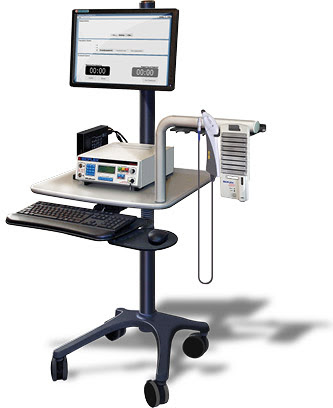
Welcome To P J H Laser
Soon after starting in general medical practice over 35 years ago, I realised that conventional medicine had little to offer people who were in chronic pain. Pain from osteoarthritis, tendon and muscle injuries, osteoporosis and rheumatism were generally treated with potentially harmful painkillers and anti-inflammatory drugs, and physical therapies such as physiotherapy and osteopathy were limited in their longterm effectiveness and availability on the NHS.
At that time I studied traditional Chinese acupuncture, which was fascinating but difficult to understand. The theory was soon adapted by doctors and other acupuncturists to form a western medical model making it more comprehensible to those practitioners who were not brought up in a Daoist tradition. Dry needle acupuncture proved effective for certain kinds of acute and chronic pain, particularly where muscle spasm and shortening were involved. I found that the beneficial effect of acupuncture, however, was mostly short-lived and I looked for alternatives.
I came across low intensity laser therapy (LILT), and initially used a laser acupuncture device to treat acupuncture points instead of needles. I found that it was not particularly effective but wanted to learn more. I found plenty of evidence for the beneficial effects of light, but much controversy too. There is a new understanding of how much we need light to maintain and repair our tissues, and how the lack of it resulting from our modern indoor sedentary lifestyle affects us badly.
Since Endre Mester in Semmelweis University, Hungary, discovered the biostimulatory effect of low intensity laser light (LILT) in 1967, there has been an explosion of interest in the ways that certain wavelengths of light interact beneficially with our bodies and those of other animals. The range of medical applications of LILT has expanded to include the healing of wounds, stimulation of cartilage and bone repair, prevention of tissue death and complications of cancer treatment, pain relief, reduction and resolution of inflammation, treating sports injuries and remediating failed spinal surgery and other post surgical pain syndromes. Recent advances in understanding how light works on us has led to evidence of benefit in the treatment of traumatic brain injury, cognitive decline, in outcome post stroke, treatment resistant depression and dry macular degeneration.
What is common to all of the above is the ability of LILT (now called photobiomodulation or PBM) at certain wavelengths and energies to modify and resolve acute and chronic inflammation, and give a lasting clinical benefit.
I have been very lucky to be able to introduce LILT in to my practice, now that laser diodes and LEDs have become easier to manufacture and afford. The “doses” of light have been largely developed and worked out in the last 10 years or so by innovative centres in Toronto, Boston, Sydney and Moscow and others, and devices suitable to be used in a clinic have become available. The treatments have demonstrated remarkable effectiveness with minimal or no possibility of harm. It has revolutionised the way I treat many conditions that were difficult or impossible to help by other means. I believe that we shall hear more of this exciting form of treatment in the next few years.
Dr Peter J Herbert FRCP
|